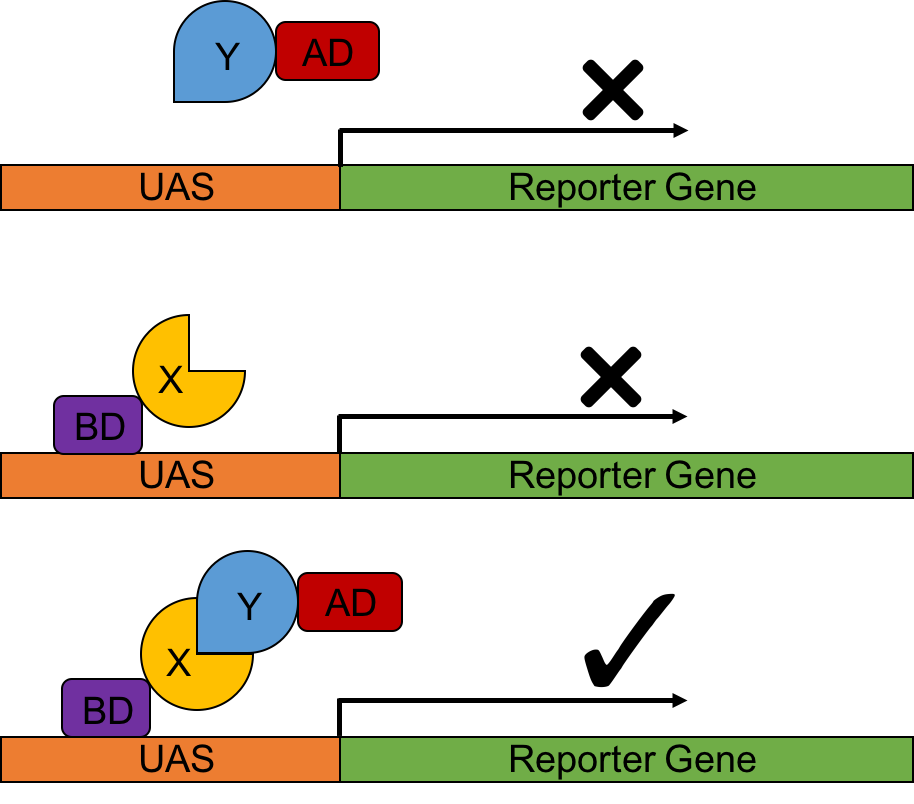

Pioneered by Stanley Fields and Ok-Kyu Song in 1989, the technique is designed to detect protein–protein interactions using the Gal4 transcriptional activator of the yeast Saccharomyces cerevisiae. The Gal4 protein activated transcription of a gene involved in galactose utilization, which formed the basis of selection.The key to the two-hybrid screen is that in most eukaryotic transcription factors, the activating and binding domains are modular and can function in proximity to each other without direct binding. This means that even though the transcription factor is split into two fragments, it can still activate transcription when the two fragments are indirectly connected.
Plasmids are engineered to produce a protein product in which the DNA-binding domain (BD) fragment is fused onto a protein while another plasmid is engineered to produce a protein product in which the activation domain (AD) fragment is fused onto another protein. The protein fused to the BD may be referred to as the bait protein, and is typically a known protein the investigator is using to identify new binding partners. The protein fused to the AD may be referred to as the prey protein and can be either a single known protein or a library of known or unknown proteins. In this context, a library may consist of a collection of protein-encoding sequences that represent all the proteins expressed in a particular organism or tissue, or may be generated by synthesising random DNA sequences. Regardless of the source, they are subsequently incorporated into the protein-encoding sequence of a plasmid, which is then transfected into the cells chosen for the screening method. This technique, when using a library, assumes that each cell is transfected with no more than a single plasmid and that, therefore, each cell ultimately expresses no more than a single member from the protein library.
If the bait and prey proteins interact (i.e., bind), then the AD and BD of the transcription factor are indirectly connected, bringing the AD in proximity to the transcription start site and transcription of reporter gene(s) can occur. If the two proteins do not interact, there is no transcription of the reporter gene.

For more information:
tel +39.0824.364090
fax +39.0824.364092
email info@genusbiotech.com